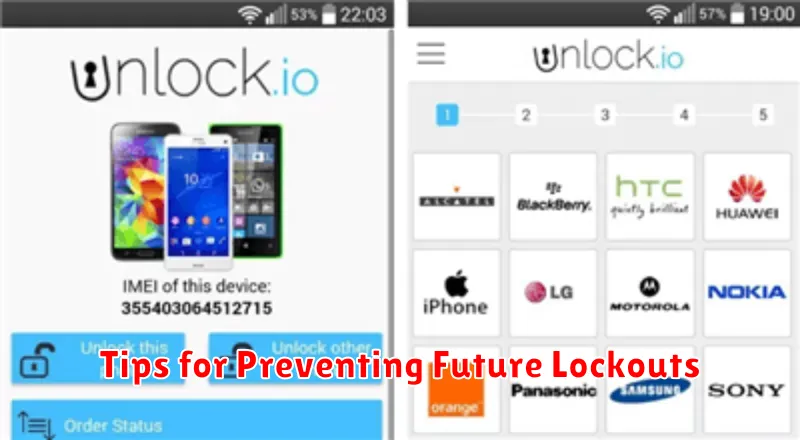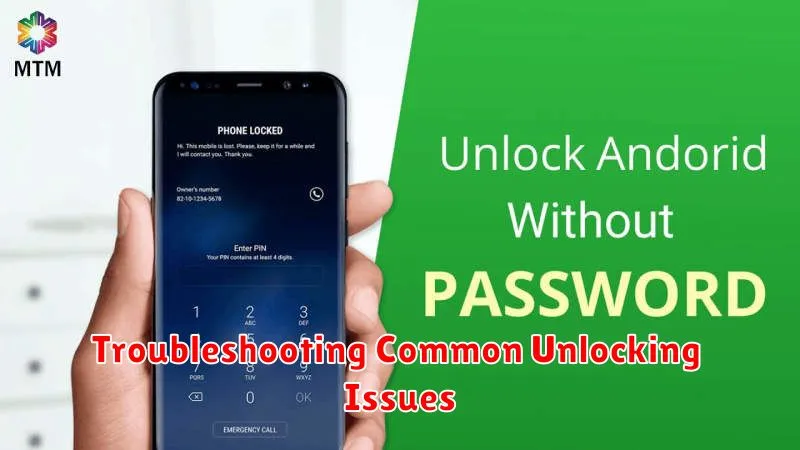Locked out of your Android phone? Don’t panic! This comprehensive guide explores various methods to unlock your Android device, ranging from simple solutions like password recovery to more advanced techniques for when you’ve completely forgotten your credentials. Whether you’re dealing with a forgotten pattern, a misplaced PIN, or a lost password, understanding the unlocking process is crucial to regaining access to your valuable data and device functionality. This article covers unlocking methods for various Android versions and phone manufacturers, providing you with the tools and knowledge to navigate this common predicament.
Unlocking your Android phone doesn’t have to be a daunting task. From utilizing Google’s built-in unlock features to exploring third-party software solutions, this guide offers a step-by-step approach to each unlocking method. Learn how to unlock your Android phone safely and effectively, minimizing the risk of data loss while ensuring the security of your personal information. We’ll delve into the specifics of each unlocking process, providing clear instructions and highlighting the potential benefits and drawbacks of each approach. This guide aims to empower you to regain control of your locked Android device and understand the various unlocking options available.
Common Reasons for Android Phone Lockouts
Android phone lockouts occur for a variety of reasons, often stemming from simple mistakes or unforeseen circumstances. Understanding these common causes can help you avoid future lockouts.
Forgotten PIN, Pattern, or Password: This is the most frequent reason for lockouts. After multiple incorrect attempts, your device locks itself as a security measure.
Accidental Input: In your pocket or bag, unintentional screen touches can lead to accidental lockouts, especially with pattern or PIN locks.
Software Glitches: While less common, software problems can sometimes interfere with the lock screen functionality, preventing access even with the correct credentials.
Biometric Sensor Malfunction: If you rely on fingerprint or facial recognition, a malfunctioning sensor can prevent you from unlocking your device, even if your biometrics are registered correctly.
Operating System Updates: In rare cases, operating system updates can introduce bugs that affect the lock screen, resulting in unexpected lockouts.
Unlocking Your Android Phone with Your PIN, Pattern, or Password
The most common way to unlock your Android phone is by using your set security measure: a PIN, pattern, or password. This is the primary security layer protecting your device and personal data.
To unlock your phone using your PIN, simply enter the correct numerical sequence on the keypad that appears on your lock screen. If you’re using a pattern, carefully trace the predefined sequence on the grid. For password-protected devices, accurately type your password using the on-screen keyboard. Ensure the correct input is entered to gain access.
If you enter the incorrect PIN, pattern, or password repeatedly, your phone may temporarily lock you out as a security precaution. This lockout duration typically increases with each failed attempt. Review the lock screen messages carefully for instructions or wait for the designated time before trying again.
If you’re confident you’re entering the correct credentials but are still experiencing issues, ensure there are no obstructions on the screen affecting touch sensitivity or causing input errors. For passwords, check for enabled Caps Lock or incorrect keyboard language settings.
Unlocking with Biometrics (Fingerprint, Face Recognition)
Biometric unlocking methods offer both convenience and security. These methods utilize unique physical characteristics to identify and authenticate you, allowing quick access to your device.
Fingerprint Unlock
Most modern Android devices come equipped with fingerprint sensors. Registering your fingerprint involves touching the sensor multiple times so the device can capture a detailed scan. Once registered, a simple touch can unlock your phone. Ensure your fingers are clean and dry for optimal sensor performance.
Face Recognition
Some Android phones employ facial recognition technology. This method uses the front-facing camera to create a map of your facial features. Looking at your phone’s screen will unlock it if the scan matches your registered facial data. Be mindful of lighting conditions, as poor lighting can sometimes interfere with facial recognition accuracy.
Important Note: While convenient, biometric unlocking can have limitations. In certain situations, such as a damaged sensor or unfavorable environmental conditions, you may need to use a backup method like your PIN, pattern, or password.
Unlocking a Forgotten PIN, Pattern, or Password
Forgetting your screen lock can be frustrating. Fortunately, there are several methods you can try to regain access to your Android device, depending on its make, model, and Android version.
Older Android Versions: Some older Android devices offer a “Forgot Pattern/PIN/Password” option directly on the lock screen. This typically involves entering your Google account credentials associated with the device. After verification, you can reset your screen lock.
Google’s Find My Device: If you have “Find My Device” enabled on your phone and it’s connected to the internet, you might be able to remotely unlock it. Visit the Find My Device website and sign in with your Google account. Locate your device and select the “Secure device” option. This allows you to set a new temporary password to unlock your phone.
Samsung’s Find My Mobile: Samsung users can utilize Samsung’s “Find My Mobile” service. Similar to Google’s service, logging into your Samsung account allows you to remotely unlock your device, provided it’s connected to the internet and the service is enabled.
Device Manufacturer Options: Some manufacturers provide their own methods for unlocking devices with forgotten credentials. Check your device manufacturer’s support website for specific instructions.
Using Google’s Find My Device to Unlock Your Phone
Google’s Find My Device offers a potential solution for unlocking your Android phone remotely. This method requires that you have previously enabled Find My Device on your phone and that your phone is connected to the internet.
To use this feature, you’ll need to access Find My Device on another device (such as a computer or tablet) using your Google account. Once logged in, select your locked device. You should see several options, including “Play Sound,” “Secure Device,” and “Erase Device.”
While Find My Device doesn’t directly unlock your phone, the “Secure Device” option allows you to set a new password. After setting a new password through this feature, you can then use that new password to unlock your phone. Be aware that this will replace your existing lock screen security.
The “Erase Device” option is a last resort. This will completely wipe your phone’s data, including the lock screen, returning it to factory settings. Consider this option only if other unlocking methods have failed and you’re concerned about data security.
Factory Resetting Your Android Phone: A Last Resort
A factory reset should be considered a last resort when all other unlocking methods have failed. This process will erase all data on your phone, returning it to its original factory settings. Be sure to back up any important data if possible before proceeding, as this data will be irretrievable after the reset.
The exact steps for factory resetting can vary slightly depending on your phone’s manufacturer and Android version. Generally, the process involves accessing the recovery mode. This is usually done by holding down a combination of buttons while the phone is powered off. Common combinations include Power + Volume Up, Power + Volume Down, or Power + Volume Up + Home.
Once in recovery mode, navigate using the volume buttons to select “Wipe data/factory reset” and confirm with the power button. This action is irreversible. The phone will then erase all data and reboot. After the reset, you will need to set up your phone as if it were new.
Tips for Preventing Future Lockouts

Preventing lockouts is always preferable to dealing with the hassle of regaining access. Here are some proactive steps you can take:
Strengthen Your Security Practices
Choose a strong and unique PIN, pattern, or password. Avoid easily guessable sequences or personal information. Consider using a password manager to generate and store complex passwords.
Utilize Smart Lock Features
Explore your Android device’s Smart Lock options. These features can keep your phone unlocked in trusted locations like your home or when connected to specific Bluetooth devices, minimizing the need to constantly unlock your phone.
Keep Biometric Data Updated
If you use fingerprint or facial recognition, ensure your biometric data is up-to-date. Register multiple fingerprints or facial scans for improved reliability and accessibility.
Regularly Review Security Settings
Periodically review your phone’s security settings to ensure they align with your preferences and provide the appropriate level of security.
Troubleshooting Common Unlocking Issues

Sometimes, even with the correct credentials, you might encounter issues unlocking your Android phone. Here are some common problems and their potential solutions:
Biometric Sensor Malfunction
If your fingerprint scanner or facial recognition isn’t working, ensure the sensor is clean and dry. Try registering your fingerprint or facial data again. If the issue persists, you may need to contact your device manufacturer for hardware support. A malfunctioning sensor shouldn’t lock you out of your device completely, as you can always fall back on your PIN, pattern, or password.
Software Glitches
Occasionally, a software glitch can interfere with the unlocking process. Try restarting your phone. This often resolves minor software issues. If the problem continues, consider updating your Android operating system to the latest version.
Forgotten Backup PIN or Password
If you have forgotten the backup PIN or password for Find My Device or a similar service, you will likely need to contact Google support or your device manufacturer’s support team. Be ready to provide proof of ownership of the device.

